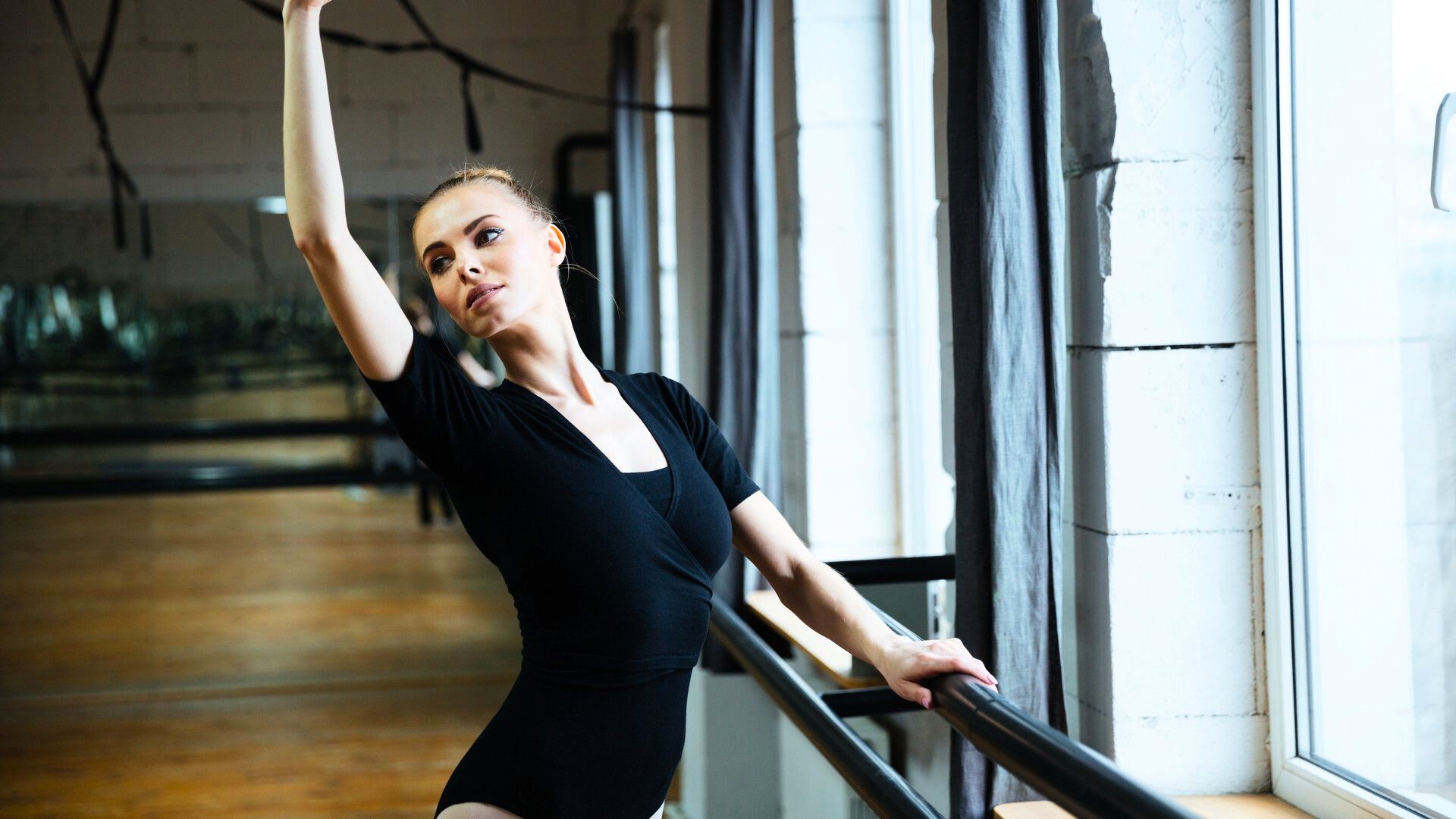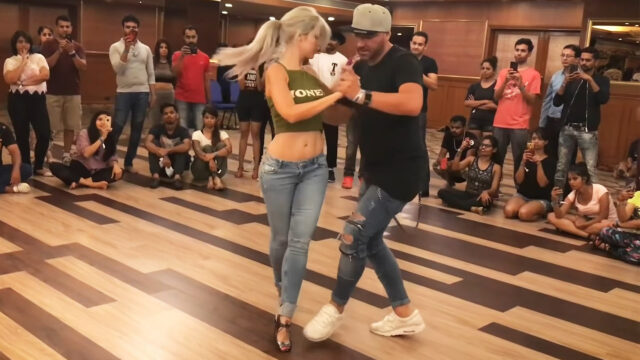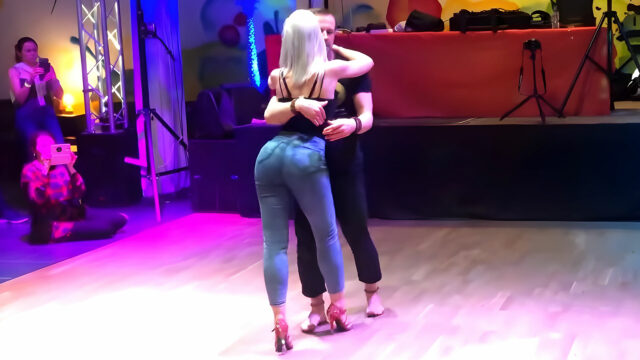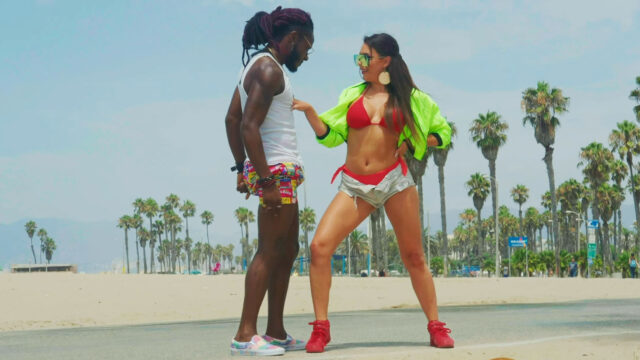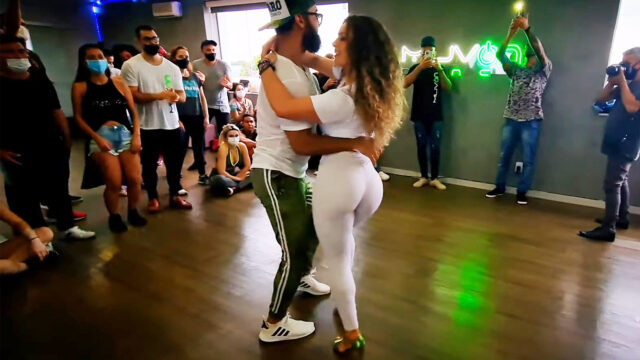Dance can be a fun and fulfilling activity for people of all ages, but there is some essential equipment needed to make sure every beginner dancer gets off to the best start.
From proper dance shoes to comfortable clothing and even accessorizing with items like breath fresheners, having the right items set-up before hitting the studio is important.
Aside from aiding in an effective practice session, investing in quality dance equipment will also help you reduce any injuries that may occur while dancing.
Table of Contents
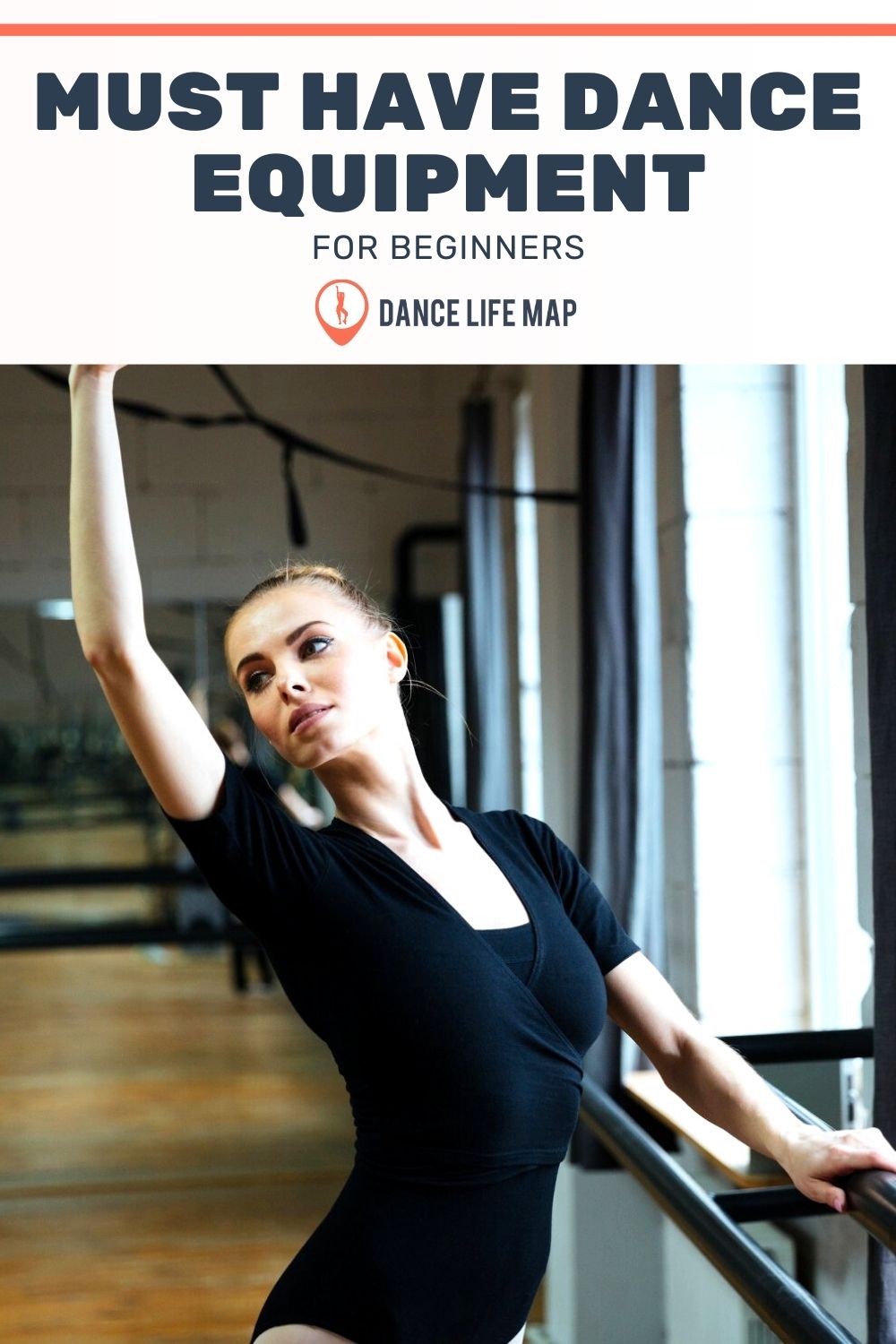
Essential Dance Equipment For Beginners
Dancers of all levels should equip themselves with the proper dance shoes, comfortable clothing, a dance bag and water bottle and stretching or strengthening tools to assist them as they learn and progress.
Proper Dance Shoes
Proper dance shoes are a must for all dancers, whether beginner or advanced. The right shoes can help protect feet and ankles from injury, provide serious shock absorption, improve performance, maintain proper alignment of the body and support feet during strenuous movement.
The main purpose of quality dance footwear is to reduce the impact on joints due to sliding and turning movements while still allowing maximum flexibility and movement precision.
When choosing dance shoes for beginners, it’s important to consider which type will best suit their specific style or choreography demands. Ballet slippers feature an enclosed upper mesh with a flexible sole that supports arch achievement in ballet class; lyrical or contemporary dancers need soft leather or suede sole multi-style split-sole jazz shoe; tap dancer requires firm-fitting tap shoe that provides a stable platform against the hard stage floor but also allows toes freedom of movement.
Check out this articles that will help you find the best one you need: 22 Best Dance Shoes for Women & Girls, 35 Best Men’s Dance Shoes
Comfortable Clothing
When it comes to dance, having the right clothing is essential. Wearing clothes that are too tight or restricting will limit your flexibility and hinder your movements.
Properly dressed dancers look prepared for their classes, so making sure you have comfortable attire on is important for beginner dancers as well. This means avoiding things like jeans or other tight clothing that won’t allow for full range of motion – denim especially restricts movement because of its stiffness.
Dance Bag
A dance bag is an essential item in the arsenal of any dancer, no matter their skill level. It provides all necessary items and accessories to keep dancers prepared for rehearsals and performances.
A dance bag should contain proper footwear, clothing such as leotards, tights, shorts or tank tops; a water bottle; a towel; and snacks if allowed by your space. Make sure to include first-aid supplies like bandaids. An organized dance bag makes going from practice to performance much easier.
Check out this article for more options: 12 Best Dance Bags for Classes & Competitions
Water Bottle
Having a water bottle is an essential part of any dancers’ dance equipment for staying hydrated during practice. Proper hydration helps to maintain energy levels, improve performance, and prevent dehydration-related conditions.
A reusable water bottle with an easy-to-use lid or straw makes drinking easier as well as more sustainable compared to disposable plastic bottles. These bottles come in various sizes to fit different dancer’s needs, with some even featuring motivational quotes and inspiring images designed specifically for dancers!
Besides keeping dancers hydrated during practice and study; these fashionable accessories can also motivate them after training sessions whether they are in class or on stage performing.
Trigger Point Foam Roller and Other Stretching/Strengthening Tools
As a dancer, having the right tools to stretch and strengthen your muscles is essential. Proper stretching will improve flexibility and strength while preventing common injuries such as pulled muscles or joint pain.
It is important to perform stretching exercises under the guidance of a qualified dance teacher, especially when first starting out.
The StretchPRO foot stretcher for example is a great tool recommended for dancers looking to maintain their foot flexibility and arch. Turn boards are also an excellent tool for working on balance and strength training in many dance styles such as ballet, jazz and tap classes and others.
Resistance bands, foam rollers, trigger point massage balls, yoga mats – these items can help increase overall range of motion through targeted muscle development as well as support throughout physical routines.
Specific Equipment For Different Dance Styles
Different dance styles require different equipment such as ballet barre and stretch bands for ballet, yoga mat and resistance bands for contemporary/modern dance, turning board and tap shoes with proper taps for jazz or tap dancing, and knee pads and dance poles for pole dancing.
Ballet Barre And Stretch Bands
The two essential pieces of Ballet equipment for beginners are Ballet Barres and Stretch Bands. Ballet Barres, which come in different sizes, are used to help dancers maintain proper body alignment while they do their dance patterns and practice turns.
They also boost core strength by limiting the amount of stress put on certain joints during moves that require a steady center of gravity. On the other hand, a stretch band increases flexibility as well as muscle control allowing dancers to extend range of movements more easily.
Specifically designed to give tension when stretched gradually, these bands can be looped around different parts of the body safely for effective stretching exercises without risking any strain or injury.
When using both Barre and Stretch Bands together, it is important to determine whether stretches should continue daily or weekly depending on your needs and level of experience.
Check out this post if you’re looking to buy ballet barres: 22 Best Ballet Barres for Home & Dance Studios
Contemporary/Modern Dance: Yoga Mat And Resistance Bands
For beginners of contemporary/modern dance, a yoga mat and resistance bands are must-have equipment. A yoga mat will aid in warm ups keeping dancers properly aligned while doing exercises, which can help to reduce the risk of injury as well as improve posture and muscle control.
Having a resistance band available is also important, as it helps with developing strength throughout the body while learning proper technique. It can also be used for increasing flexibility in legs, arms or even across the torso by adding variety to stretching routines and incorporating them into strengthening exercises.
Additionally, resistance bands come in different thicknesses so that you can adjust their difficulty depending on your experience level; this makes them convenient for any beginner or advanced dancer.
Jazz/Tap Dance: Turning Board And Tap Shoes With Proper Taps
Jazz and tap dance both require swift foot movements. Turning boards are a great tool to help beginners develop balance, core strength and agility for jazz/tap dance, ballet and other relevant styles. It helps provide a spinning surface that enables the dancer to practice spins and turns more easily.
Tap shoes with proper taps on the bottom of each shoe create an audible sound when used in combinations with steps, making it easier for dancers to understand music rhythms during the performance.
Avoiding common injuries is another important factor of having these pieces of equipment; turning boards provide balance during complex moves and reduce strain on knees, while proper taps also maintain even pressure on all parts of your feet helping prevent any possible injury from excessive force as you stomp across the stage.
Pole Dance: Knee Pads And Dance Poles
For beginners starting out in pole dance, two essential pieces of equipment are knee pads and a dance pole. Knee pads protect the beginner’s knees against abrasions and bruising that can occur while learning new moves.
Though there are a variety of choices available it’s important that you pick something with the best padding possible so that your knees stay protected at all times, Other dance styles which may require the use of knee pads are heels, dancehall and twerking.
Dance poles come in different shapes, sizes and materials such as brass or stainless steel which are best suited to an individual dancer’s skill level. Poles offer support for spins, tricks and holds during practice and performance.
Tips For Choosing The Right Dance Equipment
To ensure your safety and that you get the most out of your dancing experience, it’s important to choose the right dance equipment. Take a look this post for more information for home and studio specific options: Best Dance Equipment for Your Home & Studio
Consult With Dance Teachers
Consulting with a dance instructor is one of the most important steps when choosing the right equipment for any level of dancer. Professional instruction ensures that beginners have a complete understanding of what type and style of dance they are embarking on, as well as making sure they know what pieces to look out for.
An instructor can help recommend specific products based on their knowledge, expertise, and experience – meaning they are more likely to give you honest advice tailored towards your needs than some generic Google search result.
They will also be able to back up their recommendations with an explanation of why it’s so important , such as the importance of proper shoes in reducing stress on feet muscles or how strength tools increase flexibility and endurance when training.
Additionally, many companies offer discounts or free shipping if you purchase suggested equipment through them which could make buying built-up kit cheaper in the long run.
Consider Budget And Durability
Choosing the right dance equipment for beginners is essential in order to cultivate a successful and enjoyable dancing experience. Durability and budget go hand in hand when selecting items, as it’s important to invest in quality pieces that can stand up to frequent use.
It’s not only about the price tag; it’s also about how long your new equipment will last you into your developing dancing career. Quality items may come with a higher cost but can last much longer than bargain buys.
Proper dance shoes are an especially important and some times costly investment for any beginner dancer since they work best when lightly used, such as pointe shoes which should be replaced every few weeks or months depending on wear if worn regularly.
Highly durable pieces of equipment include yoga mats, resistance bands, core strength trigger point foam rollers, stretching tools like stretching straps and toe pads— these are great investments if you plan on pursuing more serious classes at some point down the line.
Research And Compare
Researching and comparing dance equipment options is one of the most important aspects of purchasing new gear for a beginner dancer. Research beforehand can save time, money, and potential injury.
It is essential to select properly fitted shoes appropriate for the style of dance so that movement will be comfortable and efficient. Not researching offers may result in buying something that does not meet the needs or preferences of a dancer, causing discomfort during performance.
Also, research can offer insight on which brands are known to give maximum comfort while providing optimal success results at competitions or recitals. Dependent upon the particular requirements of each kind of dance type (ballet vs modern), different types and styles may be recommended over others by seasoned dancers who have personal experience with particular brands or manufacturers in terms of product quality and customer service satisfaction rates.
Look For Comfort And Fit
When selecting dance equipment, it is essential to ensure proper fit and comfort. Ill-fitting shoes or uncomfortable clothing can affect a dancer’s performance and increase injury risk.
Properly fitting shoes are necessary for shock absorption in jumping, balance during turns, and tap precision – they should have a soft suede sole as well to protect delicate dance floors.
As for clothing, select garments that allow you to move freely while providing enough coverage of your body’s muscle groups. This ensures you can move effortlessly without worrying about the clothes shifting or tearing apart due to overstretching them beyond their limits.
Be sure to get accurately fitted by an experienced professional who understands dancers’ needs when buying any type of footwear or costume apparel from specialized vendors like a local studio or store that specializes in selling products used exclusively in the dance world.
Also consider purchasing more durable fabrics with antimicrobial properties for better hygiene standards between classes if needed.
Invest In Quality Equipment
When it comes to dance equipment, investing in good quality and long-lasting products is key. Beginner dancers should keep this in mind as they start their journey with the sport.
Quality equipment can lead to better performance since high-quality materials are typically more comfortable to use, allowing full range of motion and facilitating ease of movement during practice.
This enhanced comfort also reduces the risk of injury from overuse or misuse caused by poor quality materials used for lesser pieces of equipment.
Accessories To Enhance Your Dance Experience
A dancer’s experience can be enhanced with must-have accessories such as a first aid kit, towel, hair kit, deodorant, breath fresheners and even snacks.
First Aid Kit
Having a first aid kit is necessary for any serious dancer due to the physical demands of dance. Dancers are prone to many types of injuries including shin splints, sprains and strains, muscle soreness, and tendonitis.
A first aid kit should include bandages, pain relievers, ice packs or gel packs for swelling and inflammation, antiseptic wipes or creams for cuts and abrasions as well as tapes or straps used in rehabilitation exercises after an injury.
Furthermore, dancers should arm themselves with extra protection such as ankle braces to prevent roll-over injuries or trigger point foam rollers that can help relieve tight muscles caused by strenuous dancing activities.
It is also important that dancers periodically restock their kits with new supplies so they always have enough items when needed.
Towel
For dancers, a towel is an essential item that has many uses beyond just wiping sweat. A towel can be used for stretching, creating traction on the floor when required by certain moves, and protecting floors from sweat or other liquids.
The type of towel to use depends on the type of dance; for example, ballet and contemporary dancers may want to opt for smaller towels while pole dancers may require larger ones.
Towels also come in different weights; lighter options are more suited as they allow a dancer to move easier without feeling weighed down. Additionally fabric softeners should not be used as they weaken fibers over time making the fabric less absorbent which hinders its purpose.
Hair Kit
Having a well-stocked hair kit is essential for dancers of all levels. Not only will it help them feel more prepared and ready to take the stage, the right tools can also keep their hairstyle in place during energetic performances.
A good hair kit should include items such as brushes, styling products, hairspray, makeup with compartments and mirrors for touch ups – even a towel to cover up wet sections during rainy or sweaty rehearsals.
Dancers must also consider their hair health: washing and conditioning regularly is key for keeping it healthy and strong before long hours of rehearsal or performance days.
It’s important that dancers invest in quality products that are gentle on tresses but still effective at eliminating product buildup from oils and styling creams used to create updos and set styles into place.
Proteins found in shampoos strengthen strands while maintaining moisture balance. As mentioned above, having a high-quality hairspray ensures style longevity; aerosol sprays deliver superior hold against sweat without looking too stiff or crunchy.
Deodorant
When it comes to must-have dance equipment for beginners, deodorant may be overlooked. However, this is an important accessory that all dancers should consider. Deodorant helps prevent underarm sweat and body odor which can become overwhelming during a performance or practice session.
There are several types of deodorants available; however for dancers who want to take extra care of their bodies natural options such as aluminum free formulas may be best suited due to excess exposure to heat and sweat in dance practices or performances – plus there’s the advantage of avoiding harsh chemicals coming into contact with delicately sensitive skin areas like underarms!
Breath Fresheners
Breath fresheners are an essential part of getting through dance activities, and particularly those that involve high intensity movements. With physical exertion, there is a higher chance of bad breath caused by the sweat, saliva and bacteria on the surface area of your mouth.
To stay fresh during longer rehearsals or performances, carrying a pocket-sized container with breath fresheners is suggested so that dancers can refresh their mouths whenever necessary.
Breath fresheners such as sugar-free gum or mints have been found to be effective at not just masking but also neutralizing bad odors in the mouth caused by food, drinks and sweat.
Other alternatives include chewing sticks made from natural herbs which stimulate oral health while providing refreshing flavors like fennel and cardamom.
Snacks
Dancers need plenty of energy to power through their long practices and intense competitions, so it’s important for them to plan snacks in advance. Suitable snacks should be nutrient-filled and provide an immediate energy boost that is easy on the stomach.
Some great snack ideas include trail mix, hard boiled eggs, fruit cups with natural yogurt dip, mini sandwiches with avocado spread, smoothies with almond milk, apples dipped in nut butter, protein shakes made from healthy ingredients such as chia seeds and oat milk.
Additionally, a combination of complex carbohydrates (such as quinoa or whole grain bread) combined with lean proteins can help keep dancers energized during practice sessions while providing key nutrients like fiber and B vitamins.
When selecting snacks for Dance Competitions specifically it is important to choose smaller portions than usual so that competitors do not feel overly full during dances.
Conclusion
The proper dance wear and equipment is an important element to a successful class, rehearsal, or performance experience. Investing in quality pieces can make a world of difference for beginner dancers that are just starting out on their journey.
From comfortable fitting shoes designed for spinning and leaping to items need for any genre like stretching bands and turning boards – having the right items on hand will ensure safety during practice time as well as increase flexibility by developing better body control.
Not only will the right equipment enhance your dancing experience, but it’ll also improve form, technique and overall health while reducing chances of injury.
FAQs:
1. What are the must-have items for beginners starting out in dancing?
Starting out in dance as a beginner, it is important to have the right kinds of equipment and apparel that will help provide maximum flexibility and comfort while practicing. Essential products include ballet flats or pointe shoes for ballet, jazz sneakers for jazz and hip hop dancing, leggings or tights for leg coverage, form-fitting tops to promote movement, and a lightweight exercise mat that can be easily transported when attending classes outside of home.
2. Where I can purchase quality dance apparel?
When looking for quality dance apparel there are several trusted retailers which specialize in providing dancers with contemporary styles at an affordable price including Bloch, Capezio & Sansha as well as online stores such as Amazon & eBay who often list products from these brands at discounted rates – allowing newcomers access to professional-level gear without having break their budget instantly.
3. How can I practice my technique on my own time?
Practicing one’s technique on your own involves making use of various resources such as instructional books/videos geared towards improving basics fundamentals while also accessing tutorials available via YouTube channels set up by experienced professionals in specific disciplines.
4. Should I take some classes before investing any money into dance equipment?
Before investing any money into any equipment its advised newcomers take a few lessons from local studios first, so dance teachers have a chance to explain what should and should not be bought.
